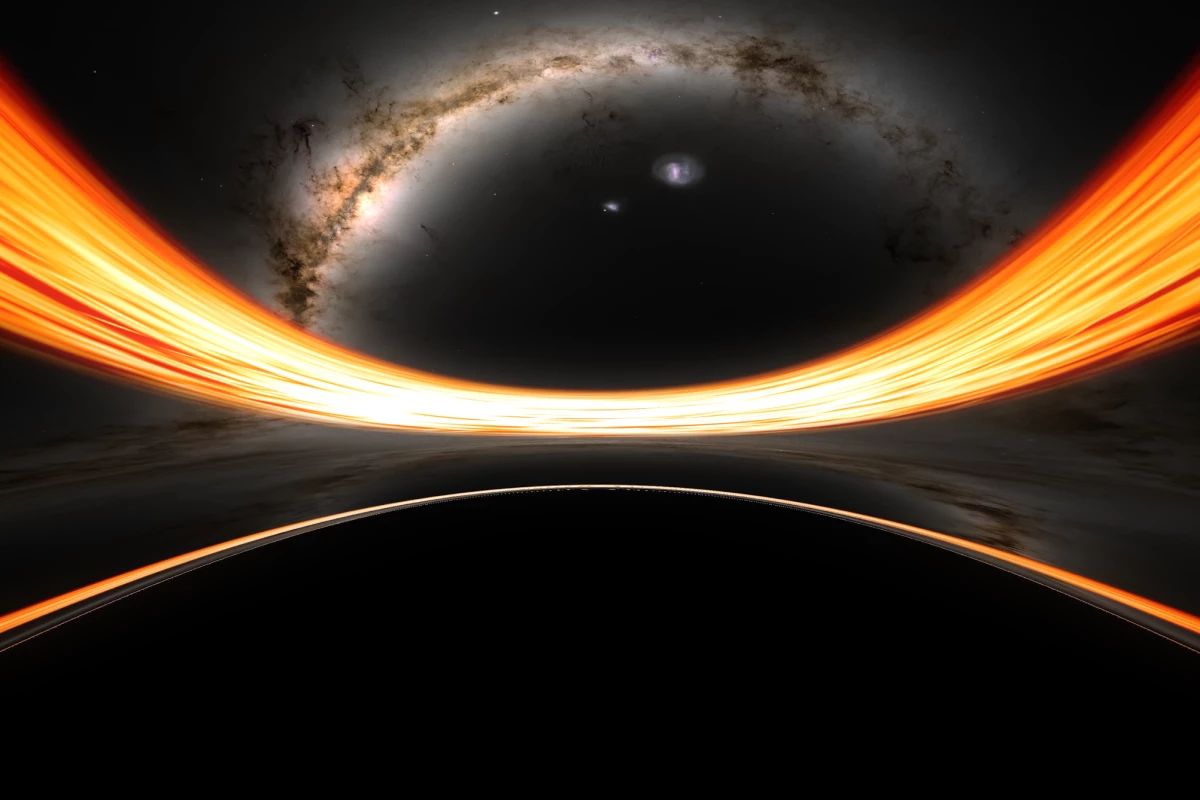What would it look like to fall into a black hole? It’s a question basically everyone has pondered, and now NASA has finally given us a first-person view of the experience with scientifically-accurate visualizations produced by a supercomputer.
We’ve all heard the descriptions in sci-fi – it's about the most hardcore fate a character can face. As you approach the black hole, the powerful gravitational influence begins to warp your view of the outside universe, stretching and bending light. The closer to the black hole something is, the stronger gravity acts on it, so there’s an incredible differential even in the short distance between your head and feet. The end result is that you would be stretched out like a cartoon character falling off a cliff – a process officially given the fun scientific name of “spaghettification.”
Light famously can’t escape once it passes the event horizon, so anyone watching from a safe distance would see you freeze in this nightmarish elongated form for all eternity. But from your perspective, your spaghettified body would then be crushed by the weight of millions of Suns into an infinitely dense singularity, along with all other nearby light and matter, and even the fabric of space and time itself.
But as it turns out, at least you’d get a pretty trippy light show during these final moments. Scientists at Goddard Space Flight Center have created new visualizations of what this coolest of deaths would look like, using NASA’s Discover supercomputer. It took about five days and generated an astonishing 10 TB of data, but you can check out the results below, complete with annotations about what you’re actually seeing.
The black hole in the simulation has similar stats to the one lurking at the center of our galaxy: it packs a mass 4.3 million times that of the Sun, and has an event horizon spanning around 16 million miles (25 million km). The video starts at a distance of 400 million miles (640 million km) from the black hole, the team says, and covers a journey that would take about three hours in real time.
A second video explores what it would look like to swoop down close to the black hole – but at a safe distance from the event horizon. Thanks to the eerie time dilation effects, if you were to take this six-hour round trip, you’d return 36 minutes younger than you'd be if you stayed put. Check that one out below, with a 360-degree view you can spin around.
These simulated videos may seem a bit frivolous, but the idea is to help everyday people connect better with astrophysics concepts. After all, this now iconic image of what black holes even look like might not have happened were it not for the 2014 Christopher Nolan movie Interstellar.
“People often ask about this, and simulating these difficult-to-imagine processes helps me connect the mathematics of relativity to actual consequences in the real universe,” said Jeremy Schnittman, a Goddard astrophysicist who created the visualizations.
Source: NASA




